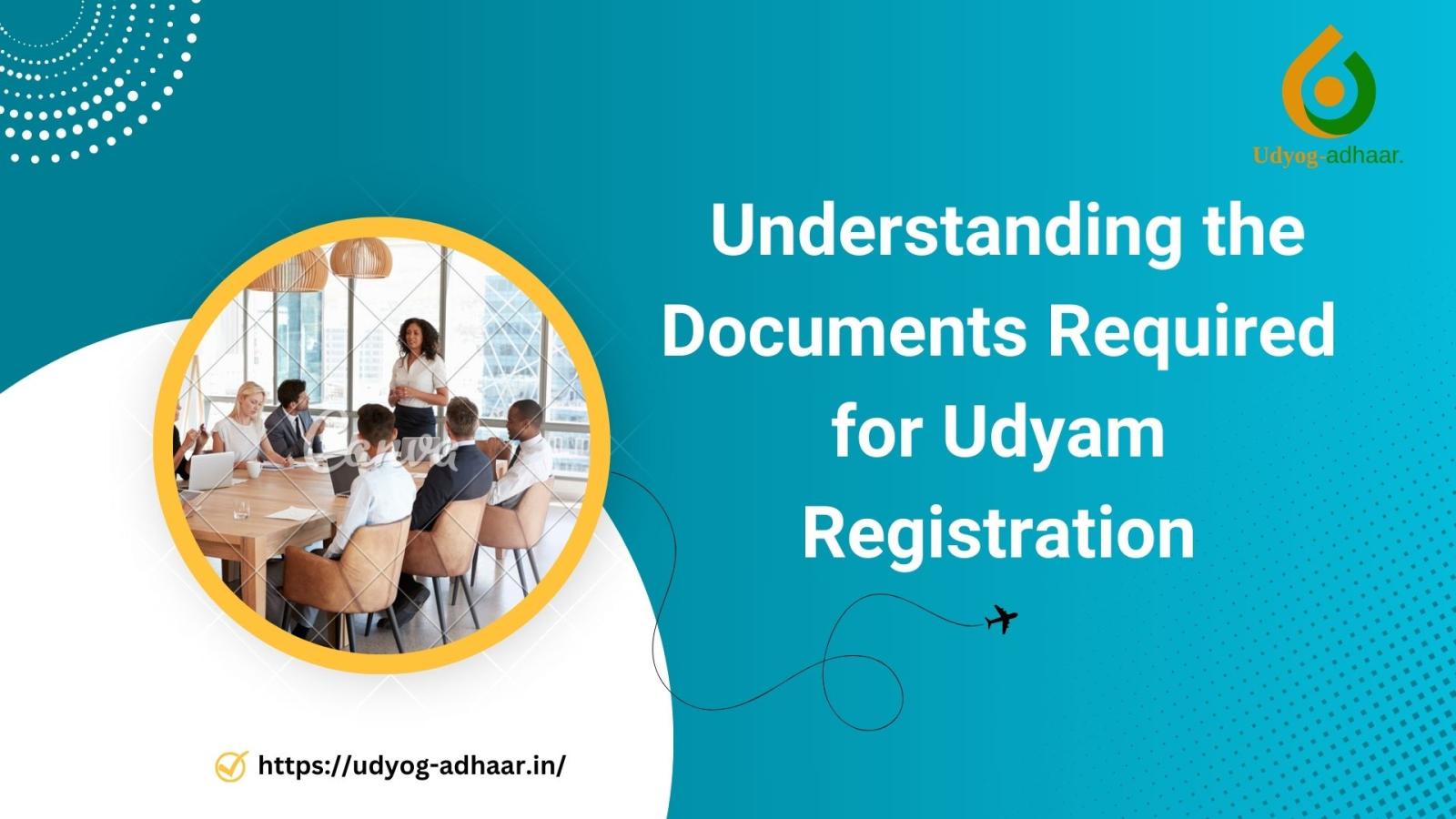Notifications

7 minutes, 36 seconds
-29 Views 0 Comments 0 Likes 0 Reviews

If you are a small business owner in India, you may have heard about Udyam Registration. This is an important step for Micro, Small, and Medium Enterprises (MSMEs) to access various government benefits, subsidies, and support. One of the most common questions that arise during this process is: "What documents do I need for Udyam Registration?" In this blog, we will break down the required documents in simple terms, making it easy for you to understand and prepare for your registration.
Before diving into the documents, let’s briefly understand what Udyam Registration is. Launched in July 2020, Udyam Registration is an online platform that allows MSMEs to register themselves with the government. This registration provides a unique identification number, which helps businesses access various government schemes and benefits designed to support their growth.
Udyam Registration is essential for several reasons:
Access to Government Schemes: Registered MSMEs can avail themselves of various government schemes, subsidies, and financial assistance.
Easy Loan Access: Banks and financial institutions often prefer lending to registered businesses, making it easier for you to secure loans.
Credibility: Having a Udyam Registration number adds credibility to your business, making it more trustworthy in the eyes of customers and partners.
Automatic Updates: The Udyam Registration system is linked to the Goods and Services Tax (GST) database, ensuring that your business information is automatically updated.
The good news is that Udyam Registration is designed to be simple. Unlike the previous Udyog Aadhaar system, you do not need to submit a lot of documents. Here’s a detailed list of the documents and information you will need to complete your Udyam Registration:
The most crucial document required for Udyam Registration is your Aadhaar number. This is a unique identification number issued by the Indian government. If you are a sole proprietor, you will need to provide your personal Aadhaar number. If your business is a partnership or a company, the Aadhaar number of the managing partner or authorized signatory will be required.
You will also need to provide the PAN of your business. The PAN is a unique identifier issued by the Income Tax Department and is essential for tax purposes. If your business is a sole proprietorship, you can use your personal PAN. However, if your business is registered as a partnership or a company, you must provide the PAN of the business entity.
You will need to provide the name of your business as registered. This is important for identification purposes and ensures that your registration is linked to the correct entity.
You must specify the type of business you are running. This could be a sole proprietorship, partnership, limited liability partnership (LLP), private limited company, or any other form of business. This information helps classify your business correctly under the MSME category.
One of the key factors in determining whether your business qualifies as an MSME is the investment in plant and machinery or equipment. You will need to provide details about the total investment in these assets. This information helps classify your business as micro, small, or medium based on the investment limits set by the government.
Micro Enterprises: Investment up to ₹2.5 crore
Small Enterprises: Investment between ₹25 crore
Medium Enterprises: Investment between ₹125 crores
You will also need to provide information about your business's annual turnover. This is the total revenue generated by your business in a financial year. Similar to the investment criteria, the turnover limits help classify your business as micro, small, or medium.
Micro Enterprises: Turnover up to ₹10 crores
Small Enterprises: Turnover between ₹100 crores
Medium Enterprises: Turnover between ₹500 crores
While not mandatory, it is advisable to have your bank account details handy. This includes the name of the bank, branch, and account number. Having a bank account in the name of your business can help streamline financial transactions and is often required for availing of government schemes.
You will need to provide your contact details, including your phone number and email address. This information is essential for communication regarding your registration and any government schemes you may be eligible for.
Now that you know the documents required for Udyam Registration, here are some tips to help you prepare:
Gather Your Documents: Collect all the necessary documents and information before starting the registration process. This will save you time and make the process smoother.
Check Your Aadhaar and PAN: Ensure that your Aadhaar and PAN details are correct and up to date. Any discrepancies can lead to delays in registration.
Understand Your Business Structure: Be clear about the type of business you are running and the investment and turnover figures. This will help you accurately fill out the registration form.
Note: you can update udyam certificate through udyam portal
Understanding the documents required for Udyam Registration is the first step toward unlocking the benefits available to MSMEs in India. By gathering the necessary information and preparing in advance, you can ensure a smooth registration process. Udyam Registration not only provides you with a unique identification number but also opens the door to various government schemes and financial assistance that can help your business thrive.

